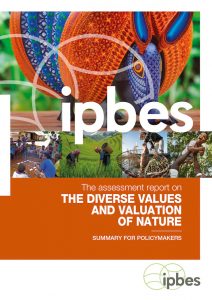REGULATED INFORMATION
INSIDE INFORMATION
Nyxoah Receives FDA IDE Approval to Initiate the ACCCESS Study of Genio in Complete Concentric Collapse Patients
First ACCCESS patient expected to be implanted in Q4 2022
Mont–Saint–Guibert, Belgium "" July 11, 2022, 8:00am CET / 2:00am ET "" Nyxoah SA (Euronext Brussels/Nasdaq: NYXH) ("Nyxoah" or the "Company"), a medical technology company focused on the development and commercialization of innovative solutions to treat Obstructive Sleep Apnea (OSA), today announced that the U.S. Food and Drug Administration (FDA) has approved an Investigational Device Exemption (IDE) to enable Nyxoah to initiate a clinical trial, called ACCCESS, to evaluate the use of the Genio system for the treatment of adult patients with moderate–to–severe OSA and Complete Concentric Collapse (CCC) of the soft palate. The FDA had previously granted Breakthrough Device Designation to Genio to treat CCC patients.
In the ACCCESS trial, Nyxoah will implant up to 106 patients with co–primary efficacy endpoints of Apnea–Hypopnea Index (AHI) responder rate, per the Sher criteria, and Oxygen Desaturation Index (ODI) responder rate, both assessed at 12 months post–implant. The first patient is expected to be implanted during the fourth quarter of 2022, in–line with prior guidance.
"The ACCCESS IDE approval is an important first step to unlocking an enormous patient population, as more than 30% of OSA patients in the U.S. have CCC. Nyxoah is the only hypoglossal nerve stimulation (HGNS) company with a positive CCC clinical trial and CCC approval in Europe, and the ACCCESS study further strengthens our leadership position in addressing the needs of these patients," commented Olivier Taelman, Nyxoah's Chief Executive Officer. "CCC patients who are refractory to CPAP are left with no option other than major palate surgery to treat their OSA. Our BETTER SLEEP trial, which enabled Nyxoah to secure a CCC label expansion in Europe and FDA Breakthrough Device Designation, demonstrated that Genio can provide these patients with a minimally invasive solution for their disorder. Nyxoah is already the only HGNS company with European CCC approval, bilateral stimulation and both 1.5T and 3.0T full–body MRI compatibility, and the ACCCESS trial is further demonstrating Nyxoah's mission of offering HGNS solutions to all patients suffering from CCC. We are seeing outstanding results in CCC patients treated with Genio in Europe and are excited to begin the ACCCESS study and make Genio available to as many patients as possible."
"Patients with Complete Concentric Collapse at the soft palate, who have failed CPAP, represent a significant unmet need in the treatment of OSA since, currently, the only FDA approved hypoglossal nerve stimulation therapy is contraindicated for these patients," commented Dr. Maria Suurna, Otolaryngologist and Director of Sleep Surgery at the University of Miami Health. "The ACCCESS study provides hope for these patients, and their treating physicians, that there may soon be a minimally invasive surgical solution to address their OSA. I, along with the entire sleep community, applaud Nyxoah for developing Genio with bilateral hypoglossal nerve stimulation and for conducting the ACCCESS trial to provide a treatment alternative for this underserved population."
About Nyxoah
Nyxoah is a medical technology company focused on the development and commercialization of innovative solutions to treat Obstructive Sleep Apnea (OSA). Nyxoah's lead solution is the Genio system, a patient–centered, leadless and battery–free hypoglossal neurostimulation therapy for OSA, the world's most common sleep disordered breathing condition that is associated with increased mortality risk and cardiovascular comorbidities. Nyxoah is driven by the vision that OSA patients should enjoy restful nights and feel enabled to live their life to its fullest.
Following the successful completion of the BLAST OSA study, the Genio system received its European CE Mark in 2019. Nyxoah completed two successful IPOs: on Euronext Brussels in September 2020 and NASDAQ in July 2021. Following the positive outcomes of the BETTER SLEEP study, Nyxoah received CE mark approval for the expansion of its therapeutic indications to Complete Concentric Collapse (CCC) patients, currently contraindicated in competitors' therapy. Additionally, the Company is currently conducting the DREAM IDE pivotal study for FDA and US commercialization approval.
For more information, please visit http://www.nyxoah.com/.
Caution "" CE marked since 2019. Investigational device in the United States. Limited by U.S. federal law to investigational use in the United States.
Contacts:
Nyxoah
Loic Moreau, Chief Financial Officer
corporate@nyxoah.com
+32 473 33 19 80
Jeremy Feffer, VP IR and Corporate Communications
jeremy.feffer@nyxoah.com
+1 917 749 1494
Attachment







